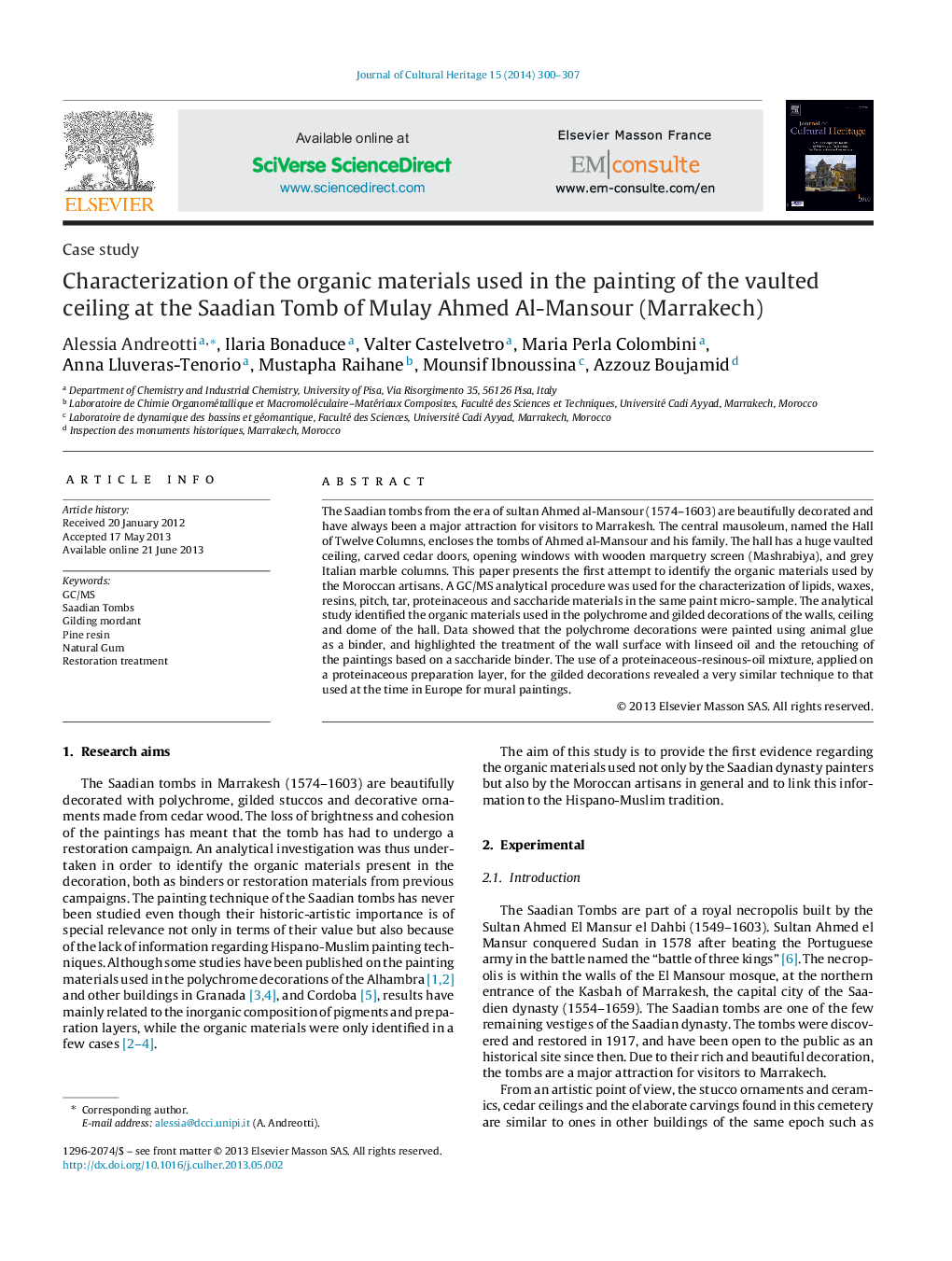| Article ID | Journal | Published Year | Pages | File Type |
|---|---|---|---|---|
| 1038175 | Journal of Cultural Heritage | 2014 | 8 Pages |
The Saadian tombs from the era of sultan Ahmed al-Mansour (1574–1603) are beautifully decorated and have always been a major attraction for visitors to Marrakesh. The central mausoleum, named the Hall of Twelve Columns, encloses the tombs of Ahmed al-Mansour and his family. The hall has a huge vaulted ceiling, carved cedar doors, opening windows with wooden marquetry screen (Mashrabiya), and grey Italian marble columns. This paper presents the first attempt to identify the organic materials used by the Moroccan artisans. A GC/MS analytical procedure was used for the characterization of lipids, waxes, resins, pitch, tar, proteinaceous and saccharide materials in the same paint micro-sample. The analytical study identified the organic materials used in the polychrome and gilded decorations of the walls, ceiling and dome of the hall. Data showed that the polychrome decorations were painted using animal glue as a binder, and highlighted the treatment of the wall surface with linseed oil and the retouching of the paintings based on a saccharide binder. The use of a proteinaceous-resinous-oil mixture, applied on a proteinaceous preparation layer, for the gilded decorations revealed a very similar technique to that used at the time in Europe for mural paintings.
